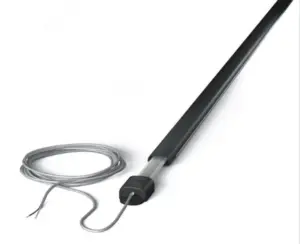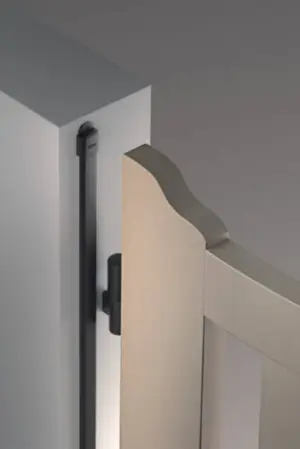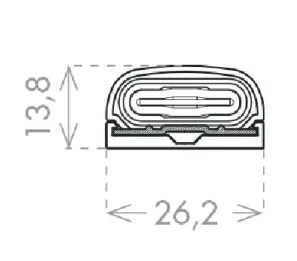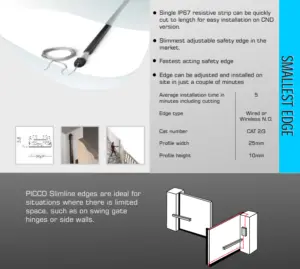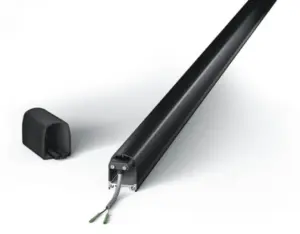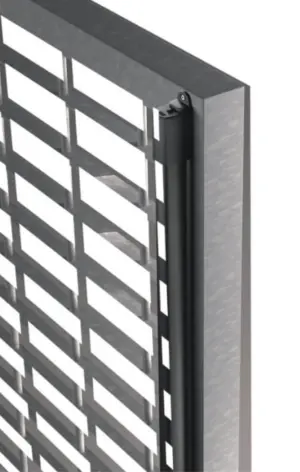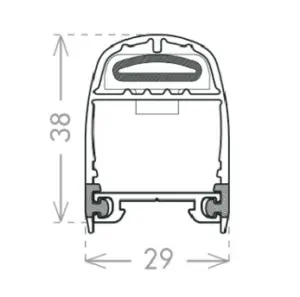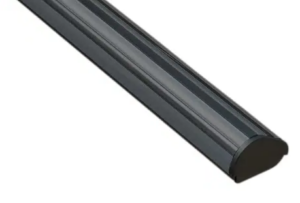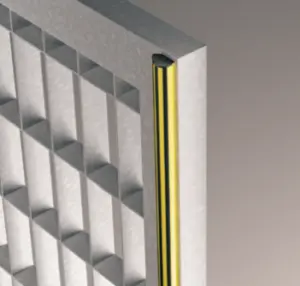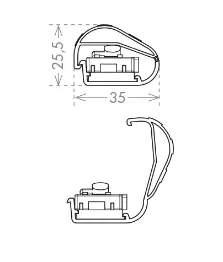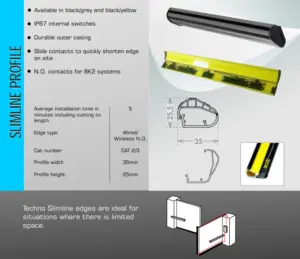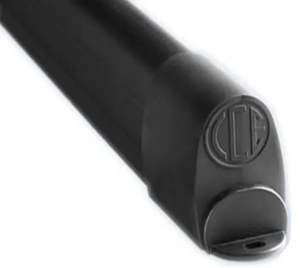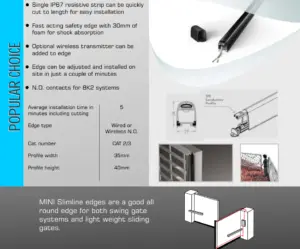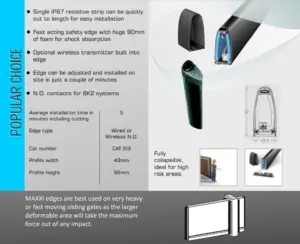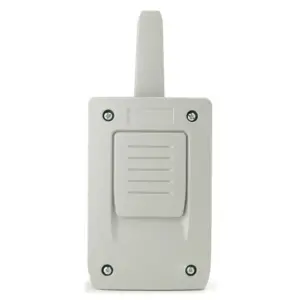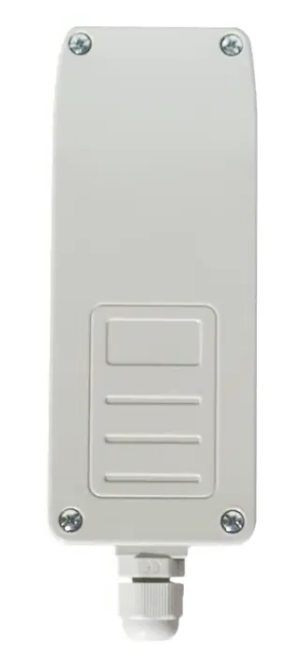





BAND-T 1st Generation Safety Transmitter
1st Generation safety transmitter to provide wireless safety on swing and sliding gates, barriers and roller shutters.
Radioband eliminates the need to hardwire rubber safety edges back to the controller, which is often difficult and time consuming, by providing a wireless solution. Simply connect your safety edge to a BAND-T transmitter, connect the BAND-R receiver to the control panel, and pair them together.
Up to 6 transmitters, and therefore safety edges, can be programmed to a single receiver (3 on each relay).
Compatible with mechanical and resistive safety edges. Compatible only with the 1st generation receiver (BAND-R).
Additional information
| Weight | 0.20 kg |
| Dimensions | 160 × 53 × 20 mm |
- 10-metre range.
- Power: Two AA-type 1.5 Vdc batteries.
- 12mA operating consumption.
- Operating temperature -20 °C – +85 °C (version up to -40 °C).
- IP65 airtightness
- Box dimensions: 160 x 53 x 20 mm.
- Change the batteries in the transmitter(s).
- Another transmitter is stored in the memory. Reset the receiver and re-program the transmitters.
- You must first reset the receiver to delete the faulty transmitter out of its memory.
- Then program your transmitter(s) as per the manual.
If transmitter(s) are programmed to relay 1, the R1 LED in the receiver should be OFF in standby and turn ON when an edge is pressed.
If transmitter(s) are programmed to relay 2, the R2 LED should be OFF in standby and turn ON when an edge is pressed.
When the R1 or R2 LED is ON, the corresponding relay output is activated.
If no safety edge is programmed to a relay, the LED will be ON.
If this is the case, the system is working. Check the wiring from the receiver to the gate or door control panel. Refer to the gate/door panel manual or contact the manufacturer.
If this isn’t the case and the R1 or R2 LED is ON in the receiver when an edge isn’t pressed:
- Ensure the jumper in the transmitter is in the correct position for the type of safety edge being used (OFF for resistive, ON for N.C Mechanical). If the jumper position is incorrect, or was incorrect at the time of programming, you must reset the receiver and re-program the transmitters.
- Reset the receiver and program one transmitter at a time to identify which transmitter or safety edge is the problem.
- Disconnect the safety edge from the transmitter and put an 8K2 resistor across the terminals. If this works, it indicates a fault with the safety edge.
- If the issue persists, you likely have signal interference. Upgrade to RADIOBAND 3G.
- This is likely caused by interference. Upgrade to RADIOBAND 3G.
- Disconnect the safety edge from the transmitter and put an 8K2 resistor in its place, if the system works normally, the issue is the safety edge.
- On rare occasions, even though a safety edge measures the correct resistance with a multi-meter, there can still be an issue with it, such as a small nick in the rubber.
Batteries should last 1-2 years
- If the batteries are draining quickly, the transmitter will need replacing.
- If out of warranty, please purchase another.
- If in warranty, please send us pictures of the transmitter in situ. (With the cover on and off).
- If transmitter has been installed correctly and is in a suitable condition, we will give you a returns number to return the item for replacement.
- The memory is full. It is possible to program 3 transmitters per relay.
- Relay 1 – R1 & R1 terminals. Relay 2 – R2 & R2 terminals. Jumpers set to CS1 & CS2.
- Relay output may need wiring in series with the photocell or stop button.
Relay 1 – R1 & R1 terminals. Relay 2 – R2 & R2 terminals. Jumpers set to BS1 & BS2.


